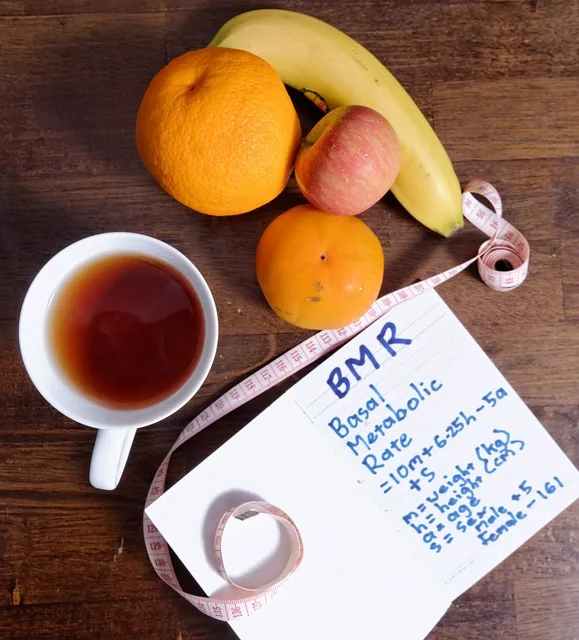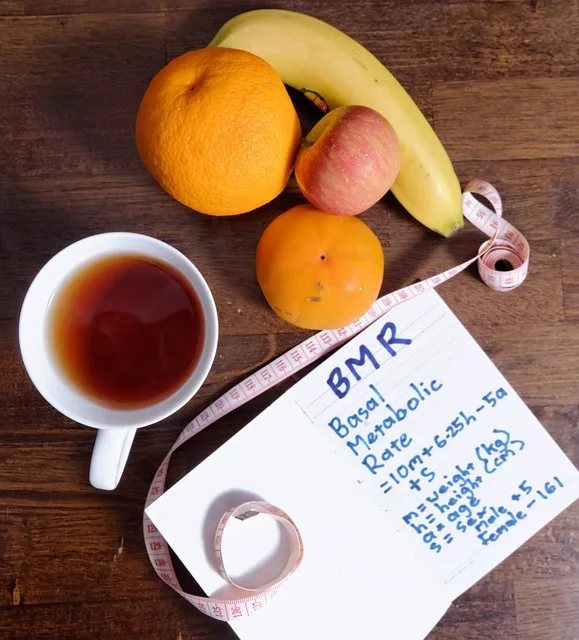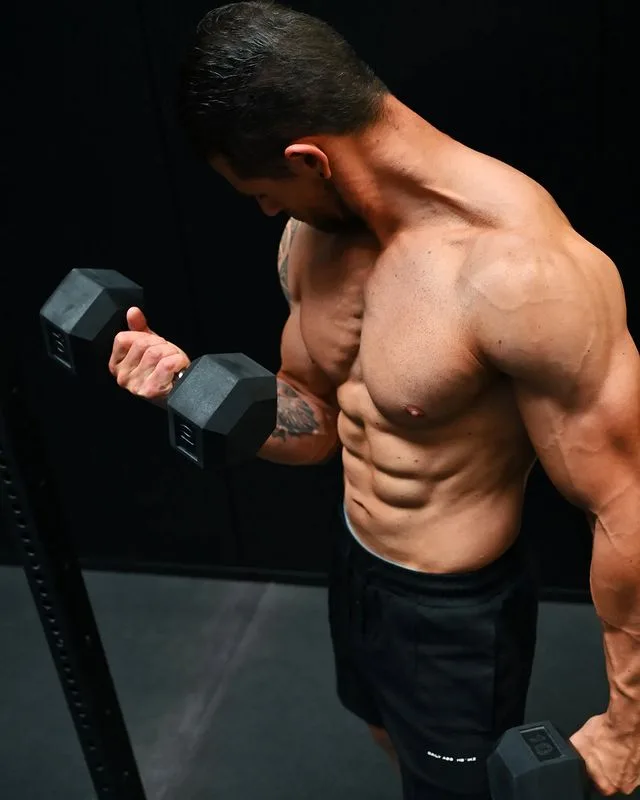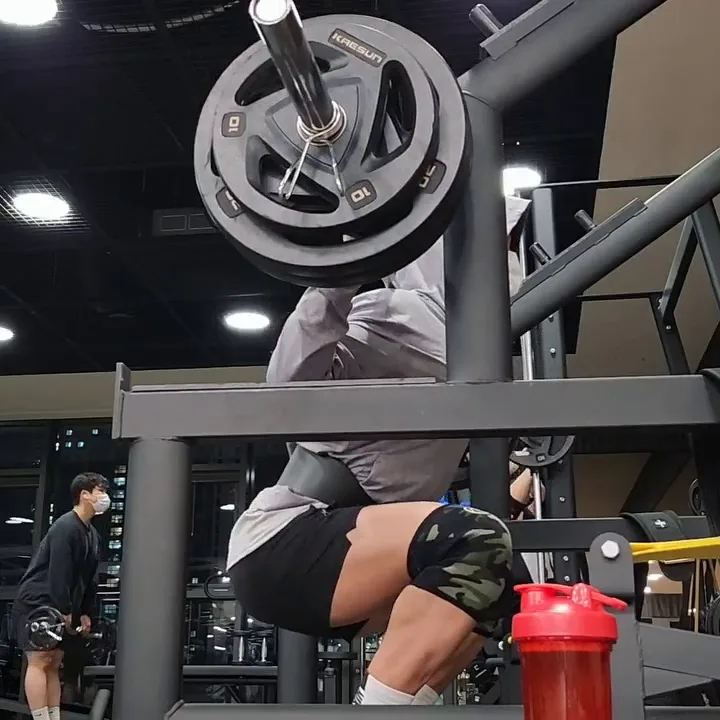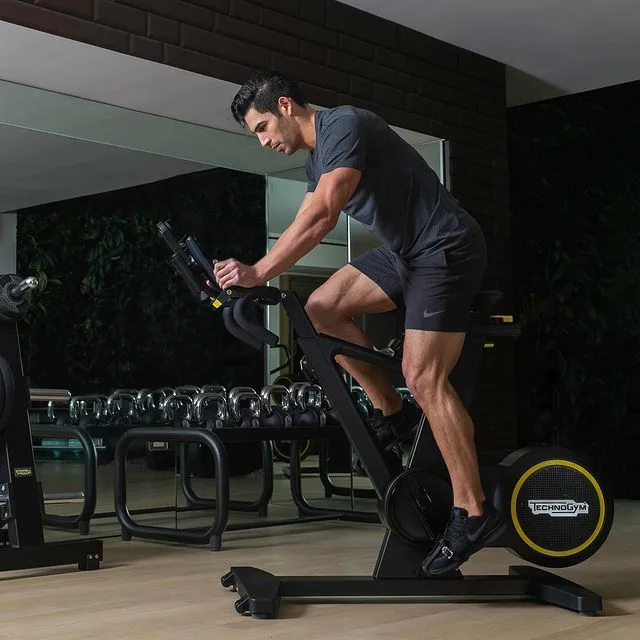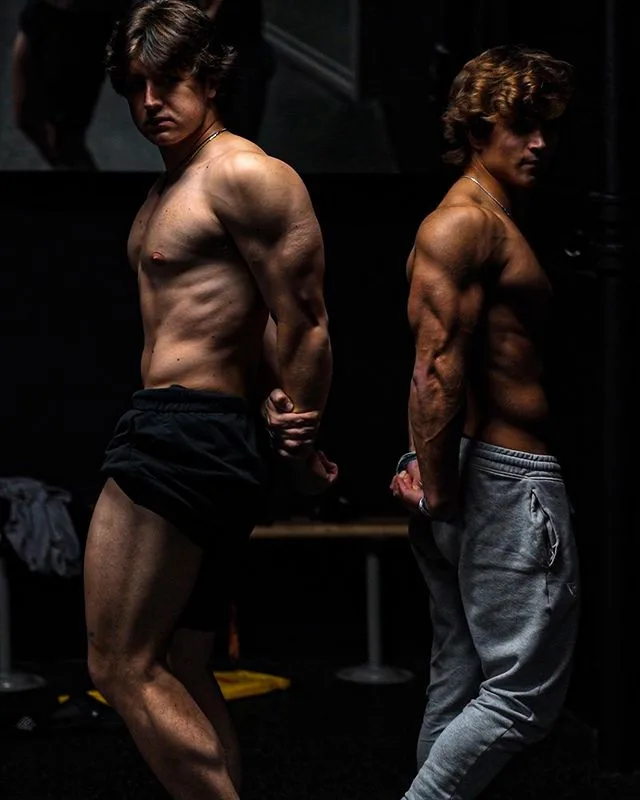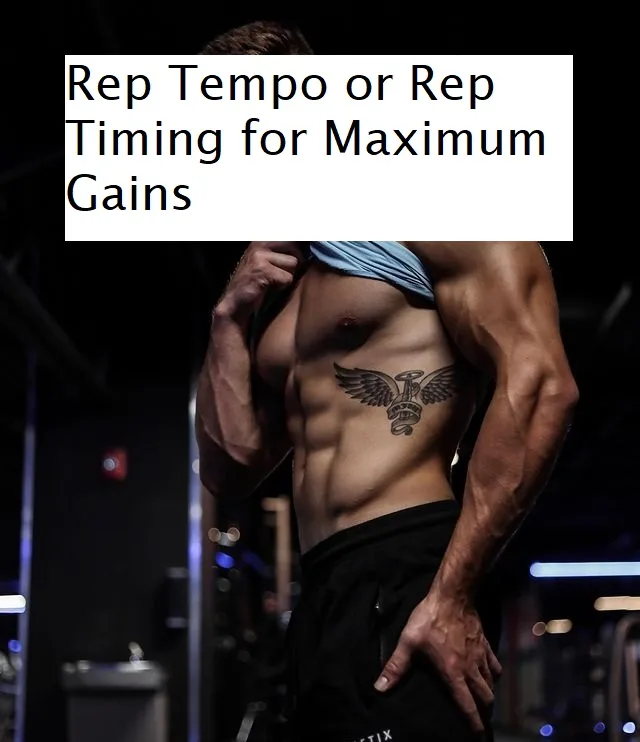Periodization training is an effective way to achieve fitness goals, but it requires careful planning, discipline, and consistency to be successful. This approach can help athletes and fitness enthusiasts to maximize their results, avoid boredom and overtraining, and reduce the risk of injury.
What is Periodization Training?
Periodization training is a structured approach to strength and conditioning that optimizes performance by manipulating training variables such as volume, intensity, exercise selection, and rest periods over a specific period of time. 1 The goal is to prevent overtraining and progressively improve athletic performance leading to peak performance at a designated event.
Benefits of periodization training
The Periodization training offers several benefits, including:
- Improved performance: By manipulating training variables, periodization training can optimize athletic performance and help individuals reach their goals, whether that be improving strength, endurance, or overall fitness.
- Injury prevention: It can help to reduce the risk of injury by incorporating periods of rest, recovery, and low-intensity exercise. 2
- Avoidance of plateaus: This training can help to avoid training plateaus by regularly changing up training variables and avoiding monotony.
- Increased motivation: The structured nature of periodization training can provide a clear roadmap for progress and increase motivation.
- Better progress tracking: The training provides a systematic approach to training that can make it easier to track progress and measure success.
- Better recovery: This training incorporates periods of rest and recovery, which can help to reduce fatigue, speed up recovery, and improve overall athletic performance. 3 4
Phases of periodization training
Periodization training is divided into three phases: Macrocycles, Mesocycles and Microcycles. 5
Each phase builds upon the previous one to gradually increase training load and improve athletic performance leading up to a competition or event.
Macrocycles
A macrocycle is the longest and most comprehensive training phase in periodization training, typically lasting several months to a year.
It encompasses the entire training program and focuses on the big picture, breaking down the training program into smaller and more specific mesocycles and microcycles.
The goal of the macrocycle is to create a roadmap for the entire training program, considering the competition schedule, the athlete’s physical abilities, and long-term performance goals.
The macrocycle phase is usually divided into several mesocycles with different training focuses and objectives.
Example:
Let’s consider a weightlifting program for a bodybuilder preparing for a competition can follow a Macrocycle of 12 months, divided into 4 phases:
- Off-Season Phase (12 weeks): Focus on building strength and muscle mass through heavy lifting and increased volume.
- Pre-Season Phase (12 weeks): Focus on refining strength and muscle shape through lighter weight and higher reps, while maintaining volume.
- Peaking Phase (8 weeks): Decrease volume and increase intensity to tap into strength gains from previous phases and peak for the competition.
- Competition Phase (4 weeks): Fine-tune form, reduce volume and taper intensity to perform optimally during the competition.
Each of these phases can be further divided into Mesocycles and Microcycles, which manipulate specific training variables to progress towards competition goals.
Mesocycles
A mesocycle is a shorter training phase within a macrocycle, typically lasting several weeks to a few months.
It focuses on specific training goals and objectives that contribute to the overall goal of the macrocycle. Mesocycles are usually designed with specific training focuses, such as hypertrophy, strength, or power, to progressively increase training load and improve athletic performance.
During a mesocycle, the training volume and intensity may vary, with periods of high intensity followed by periods of reduced intensity to promote recovery and prevent overtraining.
The mesocycle is usually broken down into several microcycles, allowing for daily or weekly variations in training intensity and volume.
Example:
Considering a weightlifting program for a bodybuilder preparing for a competition that could look like this:
- Week 1-4: Hypertrophy Mesocycle
- Focus on increasing muscle size and density through high volume and moderate intensity.
- 4-5 sets of 8-12 reps for each exercise
- 2-3 exercises per muscle group
- Week 5-8: Strength Mesocycle
- Focus on increasing strength through lower reps and higher intensity
- 3-5 sets of 3-5 reps for each exercise
- 2-3 exercises per muscle group
- Week 9-12: Peaking Mesocycle
- Focus on maximizing muscle endurance, power and explosiveness
- 3-4 sets of 6-8 reps for each exercise
- 1-2 exercises per muscle group
- Week 13: Competition Prep
- Taper down volume and intensity to allow for full recovery before competition.
- Focus on fine-tuning specific exercises and movements.
This is just a sample plan and individual needs, goals, and fitness level can impact the specifics of a weightlifting program.
Microcycles
A microcycle is the shortest training phase in periodization training, typically lasting a week or less.
It focuses on daily or weekly variations in training intensity and volume, allowing for recovery and adaptation. The microcycle is designed to support the specific training objectives of the mesocycle, as well as to prevent overtraining and injury.
During a microcycle, training variables such as volume, intensity, exercise selection, and rest periods are carefully manipulated to ensure optimal progress and performance.
The microcycle provides the necessary structure and flexibility to ensure that the athlete is able to recover and perform at their best during the next training session or competition.
Example:
A Microcycle in a weightlifting program for a bodybuilder preparing for a competition can last 1-2 weeks and include specific workouts and exercises aimed at improving certain muscle groups.
- Week 1:
- Monday: chest and triceps exercises, 3 sets of 8-10 reps
- Wednesday: back and biceps exercises, 3 sets of 8-10 reps
- Friday: legs and shoulders exercises, 3 sets of 8-10 reps
- Week 2:
- Monday: chest and triceps exercises, 4 sets of 8-10 reps
- Wednesday: back and biceps exercises, 4 sets of 8-10 reps
- Friday: legs and shoulders exercises, 4 sets of 8-10 reps
In this example, each week is a microcycle that builds upon the previous week. The number of sets and reps increase, and the exercises remain the same. This structure helps to gradually progress the intensity and volume of the workouts over time, allowing the bodybuilder to achieve better results.
The exercises and weight used in the Microcycle can vary from week to week to provide progressive overload and continue challenging the muscles. The focus can also change each Microcycle to target different muscle groups, allowing for adequate recovery and maximum growth.
Periodization training models
There are several periodization training models, but here are three common ones: Linear Periodization, Undulating Periodization, and Block Periodization. 6
Each of these models has its own advantages and disadvantages, and the best model for a particular athlete depends on their goals, experience, and physical abilities.
Linear Periodization
A straightforward model that starts with a high volume of low-intensity training and gradually increases intensity while decreasing volume over time. This model is often used for novice athletes or those starting a new sport.
Example:
- Macrocycle: A powerlifter preparing for a competition.
- Mesocycles:
- Preparatory Phase (12 weeks): focus on increasing overall fitness, mobility, and general strength
- Hypertrophy Phase (8 weeks): focus on increasing muscle mass through high-volume training
- Strength Phase (8 weeks): focus on improving strength through heavy lifting and low-rep sets
- Peaking Phase (4 weeks): focus on refining technique and peaking for competition.
- Microcycles:
- Each week within the mesocycles may have daily variations in training intensity and volume, with lower intensity days followed by higher intensity days.
- During the Preparatory Phase, the training volume is high and intensity is low.
- During the Hypertrophy Phase, the volume remains high, but intensity begins to gradually increase.
- During the Strength Phase, intensity continues to increase, while volume decreases.
- During the Peaking Phase, intensity is at its highest, and volume is at its lowest.
Undulating Periodization
A model that alternates between high- and low-intensity training within each mesocycle, rather than gradually increasing intensity over time. This model allows for greater flexibility in training and can lead to improved results for more advanced athletes.
Example:
- Macrocycle: A powerlifter preparing for a competition.
- Mesocycles:
- Preparatory Phase (12 weeks): focus on increasing overall fitness, mobility, and general strength
- Hypertrophy Phase (8 weeks): focus on increasing muscle mass through high-volume training
- Strength Phase (8 weeks): focus on improving strength through heavy lifting and low-rep sets
- Peaking Phase (4 weeks): focus on refining technique and peaking for competition.
- Microcycles:
- Each week within the mesocycles may have daily variations in training intensity, with high-intensity days followed by low-intensity days.
- During the Preparatory Phase, the intensity and volume of training will vary from day to day, allowing for both recovery and progression.
- During the Hypertrophy Phase, the focus is on high-volume training with varying intensities, allowing for both muscle building and recovery.
- During the Strength Phase, the focus is on high-intensity training with varying volumes, allowing for strength building and recovery.
- During the Peaking Phase, intensity and volume are both at their highest, allowing for optimal performance.
Block Periodization
A model that focuses on one specific aspect of training, such as strength or power, for a certain mesocycle before moving on to the next aspect. This model allows for intense focus on specific aspects of training and can lead to improved results for advanced athletes.
Example:
- Macrocycle: A powerlifter preparing for a competition.
- Mesocycles:
- Hypertrophy Block (6 weeks): focus on increasing muscle mass through high-volume training
- Strength Block (6 weeks): focus on improving strength through heavy lifting and low-rep sets
- Peaking Block (4 weeks): focus on refining technique and peaking for competition.
- Microcycles:
- Each week within the mesocycles may have daily variations in training intensity and volume, with lower intensity days followed by higher intensity days.
- During the Hypertrophy Block, the focus is on high-volume training, allowing for maximum muscle growth.
- During the Strength Block, the focus is on high-intensity training, allowing for maximum strength gains.
- During the Peaking Block, intensity and volume are both at their highest, allowing for optimal performance.
Applications of periodization training
Strength training
Strength training is used in weightlifting, powerlifting, and bodybuilding to structure training for increase muscle size, strength, and power. In this, the macrocycle is divided into focused blocks of training, each with a specific goal. The athlete trains for muscle growth in the Hypertrophy Block, strength in the Strength Block, and performance in the Peaking Block. It allows for a more targeted and focused approach to training, and can lead to improved results for more advanced athletes. This training is a highly effective way to improve athletic performance and overall health and fitness.
Endurance sports
Endurance sports are used in sports like running, cycling, and swimming to structure training for endurance and competition preparation.
Example:
- Macrocycle: An Ironman triathlete preparing for a competition.
- Mesocycles:
- Endurance Block (12 weeks): focus on building base endurance through steady-state training
- Strength Block (6 weeks): focus on improving muscular endurance through high-intensity intervals
- Peaking Block (4 weeks): focus on sharpening performance through specific endurance training.
- Microcycles:
- Each week within the mesocycles may have daily variations in training intensity and volume, with lower intensity days followed by higher intensity days.
- During the Endurance Block, the focus is on building aerobic capacity through steady-state training, allowing for improved endurance.
- During the Strength Block, the focus is on improving muscular endurance through high-intensity intervals, allowing for improved power.
- During the Peaking Block, intensity and volume are both at their highest, allowing for optimal performance.
In this example, the macrocycle is divided into focused blocks of training, each with a specific goal. The athlete trains for endurance in the Endurance Block, strength in the Strength Block, and performance in the Peaking Block. This allows for a more targeted and focused approach to training, and can lead to improved results for more advanced athletes.
Team sports
Used in team sports like football, basketball, and soccer to structure training for optimal performance and injury prevention.
Example:
- Macrocycle: A basketball team preparing for a championship season.
- Mesocycles:
- Pre-Season (8 weeks): focus on building endurance, strength, and skill through a variety of training methods
- In-Season (26 weeks): focus on maintenance and improvement of fitness through more specific training
- Off-Season (6 weeks): focus on rest and recovery, as well as more intensive training and skill development.
- Microcycles:
- Each week within the mesocycles may have daily variations in training intensity and volume, with lower intensity days followed by higher intensity days.
- During the Pre-Season, the focus is on improving overall fitness through a mix of endurance, strength, and skill training.
- During the In-Season, the focus is on maintaining and improving fitness through more specific training, as well as game preparation.
- During the Off-Season, the focus is on rest and recovery, as well as more intensive training and skill development.
In this example, the macrocycle is divided into focused blocks of training, each with a specific goal. The team trains for overall fitness in the Pre-Season, maintenance and improvement in the In-Season, and rest and development in the Off-Season. This allows for a more targeted and focused approach to training, and can lead to improved results for more advanced teams.
Individual sports
Individual sports are used in individual sports like gymnastics, figure skating, and martial arts to structure training for optimal performance and injury prevention.
Example:
- Macrocycle: A tennis player preparing for the French Open.
- Mesocycles:
- Base Endurance (12 weeks): focus on building endurance through steady-state training
- Skill Development (6 weeks): focus on improving technique and tactics through drills and match play
- Peaking (4 weeks): focus on sharpening performance through specific, high-intensity training.
- Microcycles:
- Each week within the mesocycles may have daily variations in training intensity and volume, with lower intensity days followed by higher intensity days.
- During the Base Endurance block, the focus is on building aerobic capacity through steady-state training, allowing for improved endurance.
- During the Skill Development block, the focus is on improving technical and tactical abilities through drills and match play.
- During the Peaking block, intensity and volume are both at their highest, allowing for optimal performance.
In this example, the macrocycle is divided into focused blocks of training, each with a specific goal. The player trains for endurance in the Base Endurance block, skill in the Skill Development block, and performance in the Peaking block. This allows for a more targeted and focused approach to training, and can lead to improved results for more advanced athletes.
General fitness
This application used in gym settings for general fitness, weight loss, and overall health improvement.
Example:
- Macrocycle: A 6-month fitness program with the goal of improving overall fitness.
- Mesocycles:
- Strength and Power (8 weeks): focus on building strength and power through heavy resistance training
- Endurance (8 weeks): focus on improving cardiovascular endurance through steady-state training
- Hypertrophy (8 weeks): focus on increasing muscle size and overall body composition through high-volume training
- Microcycles:
- Each week within the mesocycles may have daily variations in training intensity and volume, with lower intensity days followed by higher intensity days.
- During the Strength and Power block, the focus is on building strength through heavy resistance training and power through plyometrics and explosive exercises.
- During the Endurance block, the focus is on improving cardiovascular endurance through steady-state training.
- During the Hypertrophy block, the focus is on building muscle size through high-volume training.
In this example, the macrocycle is divided into focused blocks of training, each with a specific goal. The participant trains for strength and power in the Strength and Power block, endurance in the Endurance block, and muscle size in the Hypertrophy block. This allows for a more targeted and focused approach to training, and can lead to improved results for more advanced fitness enthusiasts.
Who should not use periodization training?
Individuals who are new to exercise may find periodization training to be too intense or challenging. In these cases, it may be best to start with a more gradual, less structured approach to training before incorporating periodization principles.
Individuals who have certain medical conditions, such as heart disease, joint problems, or uncontrolled high blood pressure, may not be able to participate in periodization training. It is important to consult a doctor before starting any new exercise program, especially if you have a medical condition or are taking any medications.
This training requires a significant amount of time and effort, and individuals who are not prepared for this commitment may not see the benefits of this approach.
Periodization training is a highly structured approach to exercise, and individuals who are seeking a more relaxed, casual approach to fitness may find it to be too demanding.
How to incorporate into your fitness routine
Determine what you want to achieve through your training, such as increased strength, improved endurance, or enhanced performance in a specific sport.
Evaluate your current level of fitness and determine any areas that need improvement. This information will help to guide the design of your periodization program.
Divide your training into macrocycles, which are typically 12-16 weeks in length and correspond to the different phases of periodization (preparation, hypertrophy, power, and peaking).
Within each macrocycle, divide your training into mesocycles, which are typically 2-4 weeks in length and focus on specific training goals.
Within each mesocycle, plan your microcycles, which are typically 1-2 week in length and focus on specific training variables, such as volume, intensity, and exercise selection.
Keep track of your progress throughout each phase of your periodization program, and make adjustments as necessary to ensure that you are on track to achieve your goals.
At the end of each macrocycle, re-evaluate your progress and adjust your training program as necessary.
Challenges of periodization training
- Complexity: Periodization training can be a complex process, and it can be difficult for individuals to understand how to apply its principles to their own training program.
- Rigidity: The structured nature of periodization training can make it difficult for individuals to make changes to their training program if necessary. 7
- Demanding schedule: Periodization training can be demanding, both in terms of the amount of time and effort required, as well as the intensity of the training sessions.
- Difficulty with adherence: Sticking to a structured training program can be challenging, especially for individuals who have busy schedules or other responsibilities.
- Need for expert guidance: Periodization training requires a deep understanding of training principles, and it can be difficult for individuals to determine the best approach for their needs without the guidance of an expert.
- Risk of overtraining: If not executed correctly, periodization training can increase the risk of overtraining, which can lead to injury, burnout, and decreased performance. 7 8
- Lorenz D, Morrison S. “CURRENT CONCEPTS IN PERIODIZATION OF STRENGTH AND CONDITIONING FOR THE SPORTS PHYSICAL THERAPIST.” Int J Sports Phys Ther. 2015 Nov;10(6):734-47. PMID: 26618056; PMCID: PMC4637911.[↩]
- Heard C, Willcox M, Falvo M, Blatt M, Helmer D. “Effects of Linear Periodization Training on Performance Gains and Injury Prevention in a Garrisoned Military Unit.” J Mil Veterans Health. 2020 Jul;28(3):23-34. PMID: 33117460; PMCID: PMC7590922.[↩]
- Cunanan AJ, DeWeese BH, Wagle JP, Carroll KM, Sausaman R, Hornsby WG 3rd, Haff GG, Triplett NT, Pierce KC, Stone MH. “The General Adaptation Syndrome: A Foundation for the Concept of Periodization.” Sports Med. 2018 Apr;48(4):787-797. doi: 10.1007/s40279-017-0855-3. PMID: 29307100.[↩]
- Williams TD, Tolusso DV, Fedewa MV, Esco MR. “Comparison of Periodized and Non-Periodized Resistance Training on Maximal Strength: A Meta-Analysis.” Sports Med. 2017 Oct;47(10):2083-2100. doi: 10.1007/s40279-017-0734-y. PMID: 28497285.[↩]
- Strohacker K, Fazzino D, Breslin WL, Xu X. “The use of periodization in exercise prescriptions for inactive adults: A systematic review.” Prev Med Rep. 2015 May 6;2:385-96. doi: 10.1016/j.pmedr.2015.04.023. PMID: 26844095; PMCID: PMC4721364.[↩]
- Evans JW. “Periodized Resistance Training for Enhancing Skeletal Muscle Hypertrophy and Strength: A Mini-Review.” Front Physiol. 2019 Jan 23;10:13. doi: 10.3389/fphys.2019.00013. PMID: 30728780; PMCID: PMC6351492.[↩]
- Issurin VB. “New horizons for the methodology and physiology of training periodization.” Sports Med. 2010 Mar 1;40(3):189-206. doi: 10.2165/11319770-000000000-00000. PMID: 20199119.[↩][↩]
- Ivarsson A, Johnson U, Andersen MB, Tranaeus U, Stenling A, Lindwall M. “Psychosocial Factors and Sport Injuries: Meta-analyses for Prediction and Prevention.” Sports Med. 2017 Feb;47(2):353-365. doi: 10.1007/s40279-016-0578-x. PMID: 27406221.[↩]


